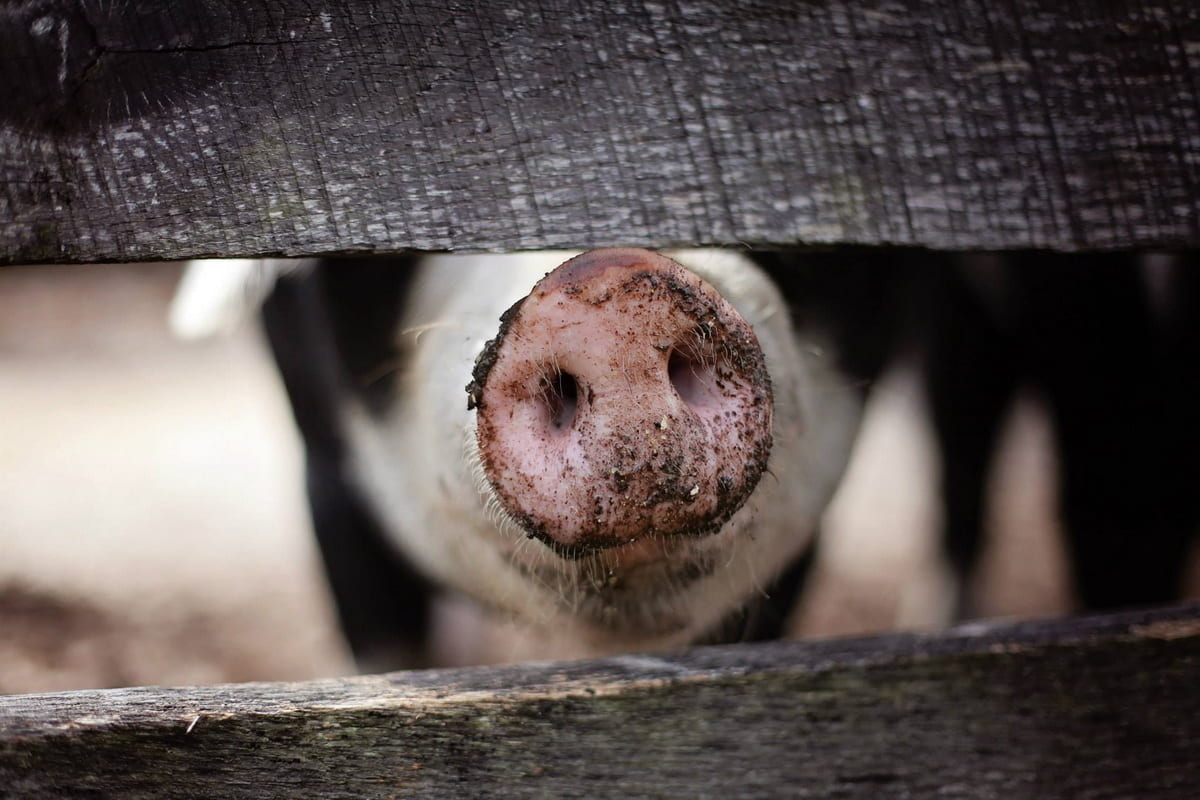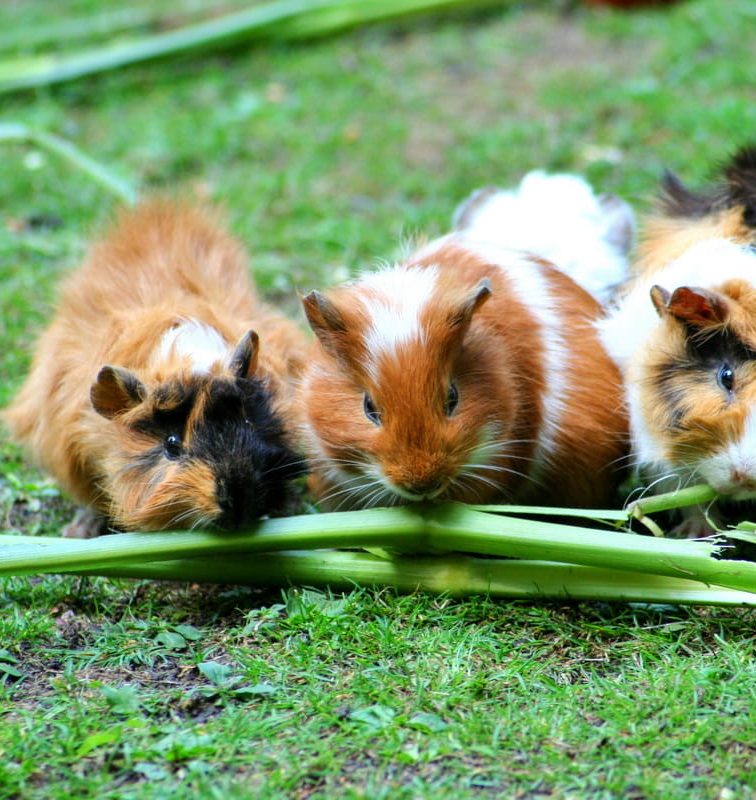Hey there, you barnyard ballers and animal aficionados! Welcome to a jamboree of jaw-dropping facts and straight-up shenanigans from the world of farm animals.
If you thought the countryside was just about rolling hills and the sweet smell of hay, think again. Those critters you see lazily munching on grass or clucking around are walking, neighing, and quacking treasure troves of bizarre and fascinating trivia. Yep, I’m talking full-blown, fur-flying fun facts about farm animals that are so wild, you’ll be scrambling to share them at your next dinner party—or Zoom call, if that’s still a thing.
We’ll dive into cows’ social lives, chickens’ super-seeing eyes, and even learn about goats who, I swear, have accents! So grab your boots (or not, no judgment here), and let’s mosey on down this farm animal fun facts extravaganza. Ready, set, yee-haw!
1. Cows Have Best Friends
Let’s moo-ve right into our first tidbit. Ladies and gents, cows have best friends. That’s right, these cud-chewing cuties like to pair up and spend quality time together. Research shows that when separated from their BFFs, cows get stressed, showing an increase in heart rate and cortisol levels. Now ain’t that something?
So what does this mean for the life of a cow? Well, if they had Facebook, you’d probably see a lot of tagged photos like “Besties for the Resties” or “Moo and Me.” The irony is real—cows, often seen as meat and milk machines, have emotional depth and social bonds. Who knew?
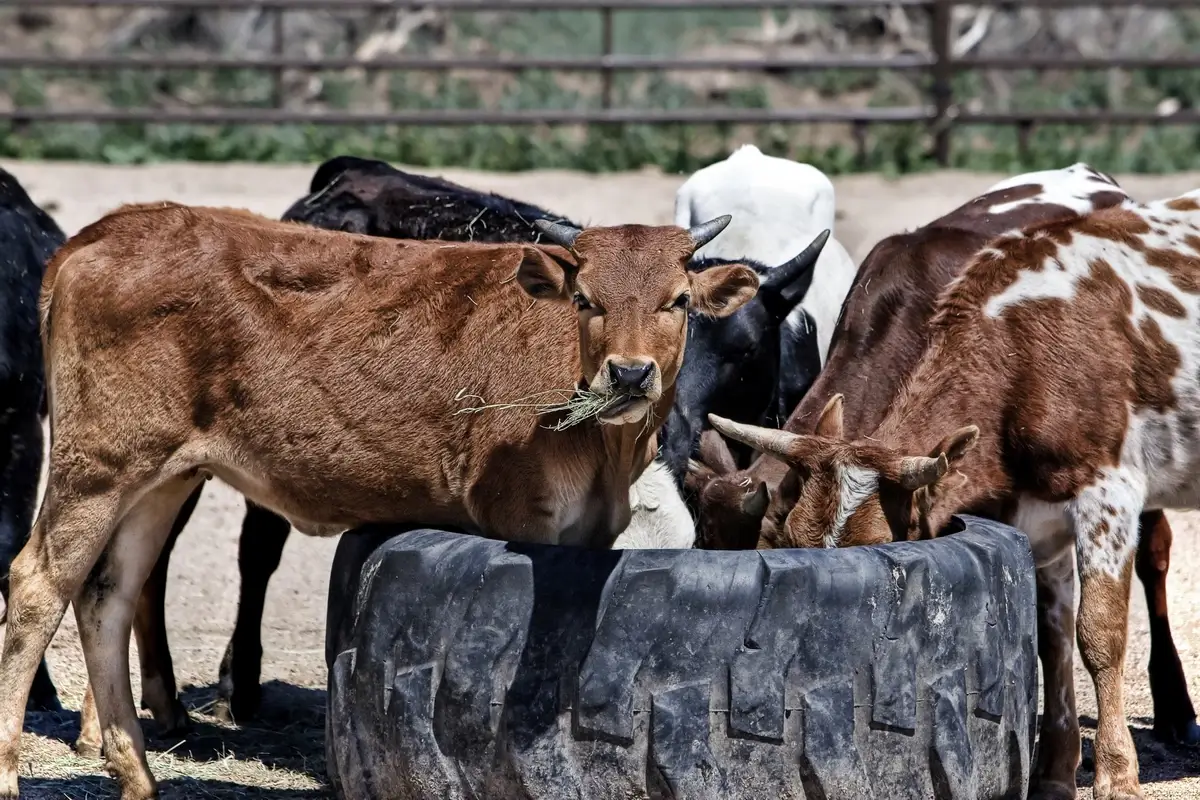
Pixabay / Pexels
2. Chicken Vision is Out of This World
Next up, let’s talk cluckers. Ever thought that chickens are simple birds with pebble-sized brains? Think again! These fellas have vision that’s basically superhero-level. Chickens see five primary colors, unlike our measly three. They can even see ultraviolet light!
What’s the benefit of this, you ask? For starters, it helps them spot predators from afar and find food more efficiently. It might also explain why roosters crow at the break of dawn—they’re literally seeing the day in a different light. So yes, when a chicken looks at you, it probably sees things about you that you never knew existed. Pretty cool, huh?
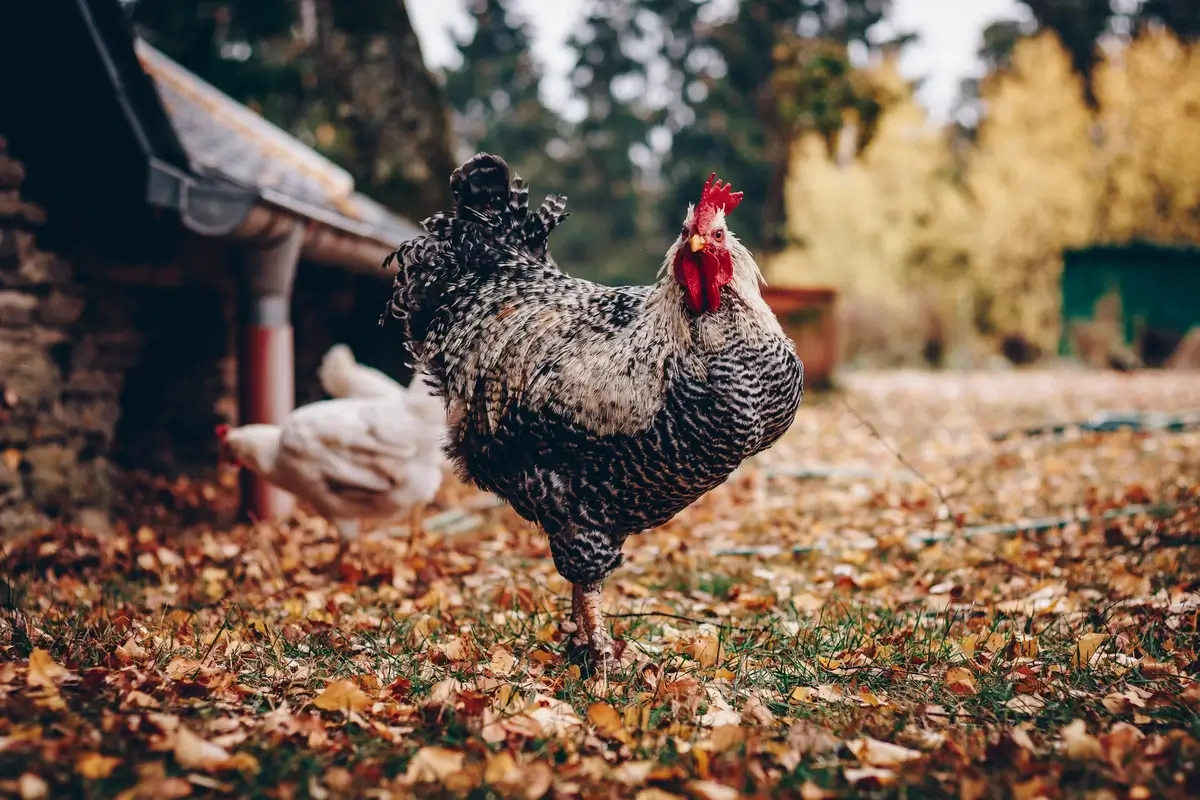
Kirsten Bühne / Pexels
3. Goats Have Accents
And continuing on our journey through the annals of fun facts about farm animals, let’s talk goats! No, not the GOAT (Greatest of All Time) although they’re certainly in the running for that title, but actual bleating goats. And guess what? They have accents! That’s right, studies have found that young goats adapt their calls based on their social circle, essentially picking up accents.
So, let’s paint a picture here. Imagine you’re a farmer with a herd of goats in Texas; don’t be surprised if they have a twangier bleat than their Yankee counterparts in New York. Baby goats, or kids as they’re also known, pick up their “accent” from their surroundings, not just from mom and dad.
4. Pigs are Brainiacs
Oink, oink, folks! Let’s get into the nitty-gritty of porcine prowess. Pigs are often saddled with reputations of being dirty and, well, pig-headed. But hold your horses—or should I say, pigs?—because these curly-tailed cuties are downright brainy. Did you know that pigs are one of the smartest animals on the farm? They’re even smarter than dogs and can solve puzzles faster than some primates.
Researchers have found that pigs can learn their names, understand mirrors, and even manipulate a joystick. Seriously, if they had opposable thumbs, they’d probably beat you at Fortnite. They’re social, they’re clever, and they’ve got a great memory. It’s like that kid in school who was good at everything but never bragged about it—pigs are the unsung heroes of the farmer’s domain.
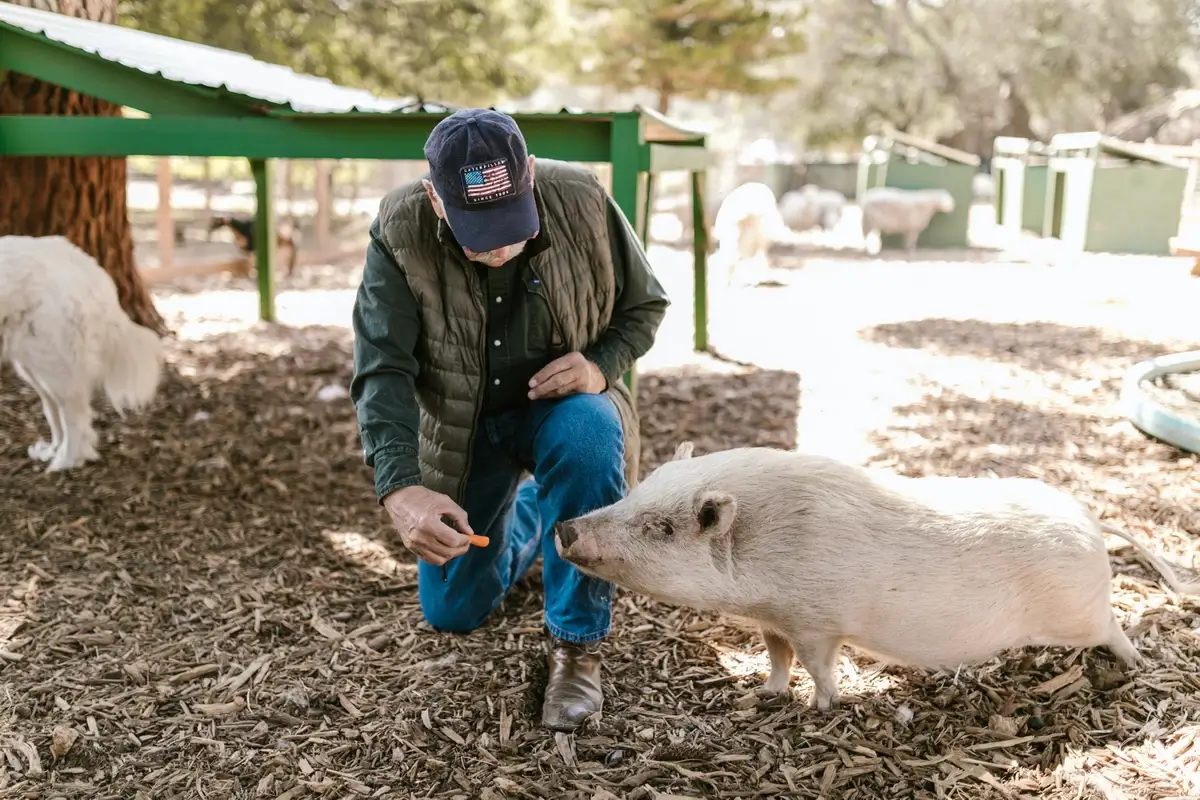
RDNE Stock project / Pexels
5. Horses Can’t Vomit
Gallop over here, equestrian enthusiasts! Let’s talk horses, the majestic creatures that have galloped through human history, from pulling chariots to starring in shampoo commercials. But did you know that horses physically can’t vomit? Yep, no regurgitating for these beauties.
The reason is anatomical: The muscles in the horse’s esophagus only work one way and their stomachs have a strong band of muscles on the entrance, making it virtually impossible to reverse the process. The implications are huge for their digestive health, as they can’t expel toxic substances like other animals can. So, horse owners need to be extra careful about what their hoofed friends eat.
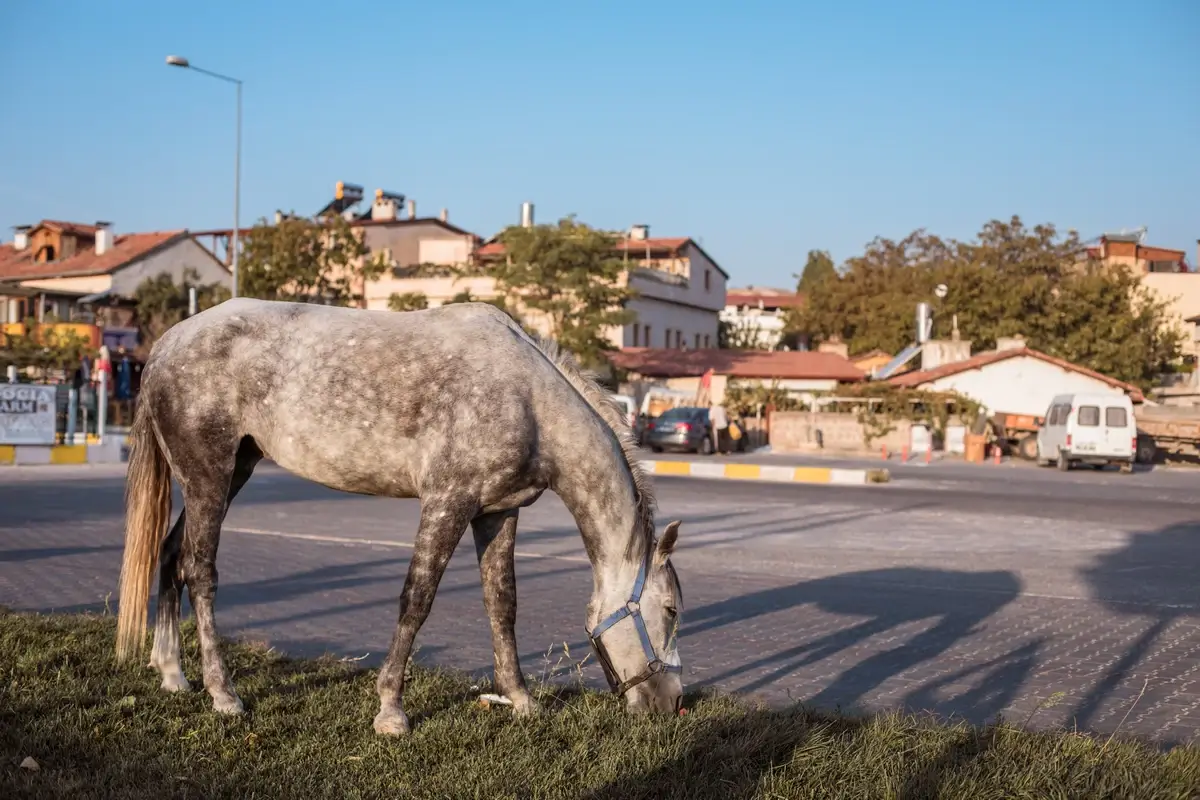
Yelena Mezentseva / Pexels
6. Sheep Recognize Faces
Alright, all you wool lovers and mutton munchers, let’s get sheepish. Sheep are often used as the go-to metaphor for mindlessness, but let’s shear those stereotypes away. Did you know that sheep are quite good at recognizing faces? We’re talking both sheep faces and human faces!
Research shows that these woolly wonders can remember up to 50 faces for at least two years. That’s better than some people I know, to be honest. Just imagine going to a sheep high-school reunion. They’d all remember each other, reminiscing about the good ol’ days of grazing in the pasture.
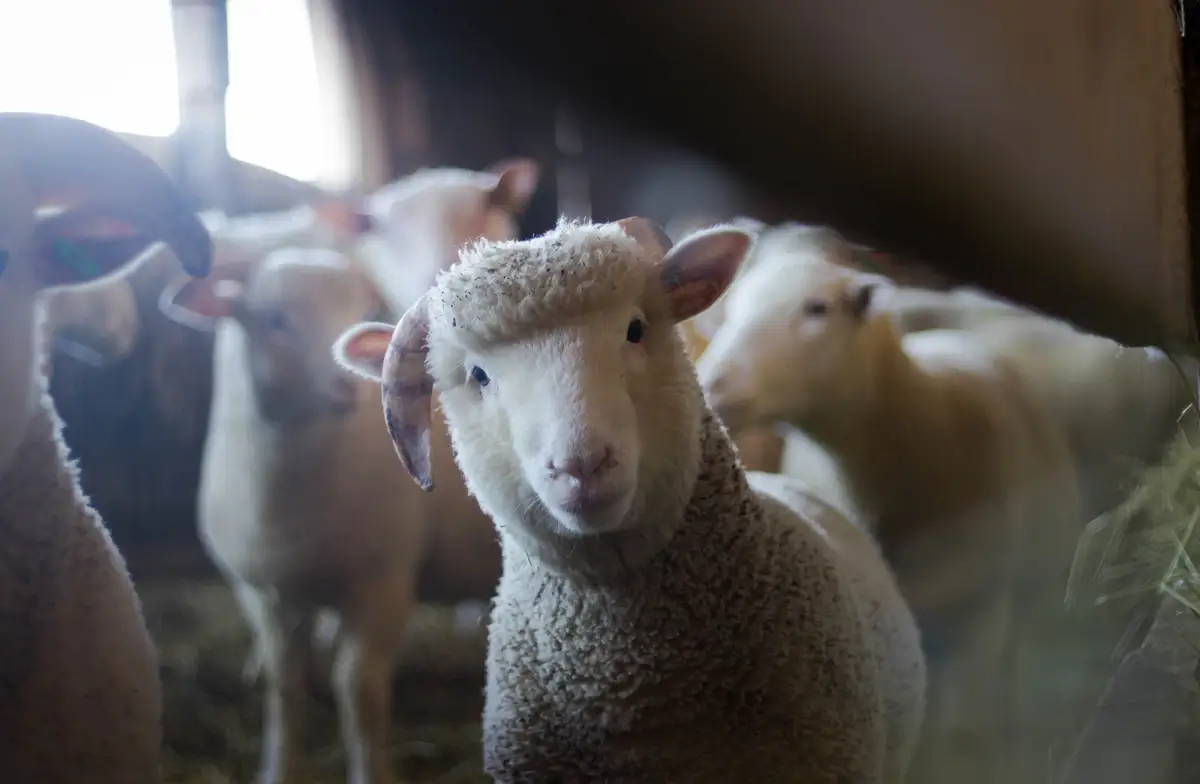
Trinity Kubassek / Pexels
7. Ducks are All About Teamwork
Let’s keep rolling with our adventure through fun facts about farm animals, shall we? Now, when you think about farm ducks, you might envision them just waddling around, aimlessly quacking. But guess what? These feathery farm inhabitants are incredible team players. On the farm, ducks often stick together in small groups or flocks. This isn’t just for the company; it’s a collective security measure against predators.
They have a kind of “neighborhood watch” in their flocks. One or two ducks will generally keep an eye out for trouble while the others forage or swim. And when one of them sounds the alarm, you better believe the rest are quick to respond, either heading for cover or joining together to intimidate the threat. These ducks have each other’s backs, or should I say, feathers? So the next time you see a bunch of ducks at a farm, remember, they’re not just loafing around—they’re collaborating!

Melissa McMasters / Flickr
8. Turkeys Have Blush Moments
Alright, let’s talk turkey! No, really, let’s delve into the colorful world of turkeys. Forget mood rings, these feathery fellas have something way cooler. Turkeys can actually change the color of their skin, particularly the skin on their heads. Why? It’s like their version of blushing. Depending on their emotional state—whether they’re excited, angered, or frightened—their skin can shift between red, white, and blue. It’s like they’re a walking American flag!
The change in color happens due to the swelling or contraction of blood vessels under the skin. This nifty trick is mainly found in males, who use it to communicate dominance and attract mates. So next time you’re visiting a farm, keep an eye on the turkey parade; you might just see a live mood ring strutting about!
9. Donkeys’ Long Ears Aren’t Just for Show
Time to tune into the world of donkeys and those marvelous long ears of theirs. Now, you may think those lengthy ears are just for eavesdropping on farm gossip, but nope, they serve some practical purposes too. For one, those ears are like natural air conditioners. Blood vessels in the ears help regulate a donkey’s body temperature, keeping them cool in hot climates.
Moreover, those big ears give them an exceptional sense of hearing, helping them detect predators or danger from far away. So the next time you see a donkey, don’t just admire its charming face—give a nod to those multi-functional ears!
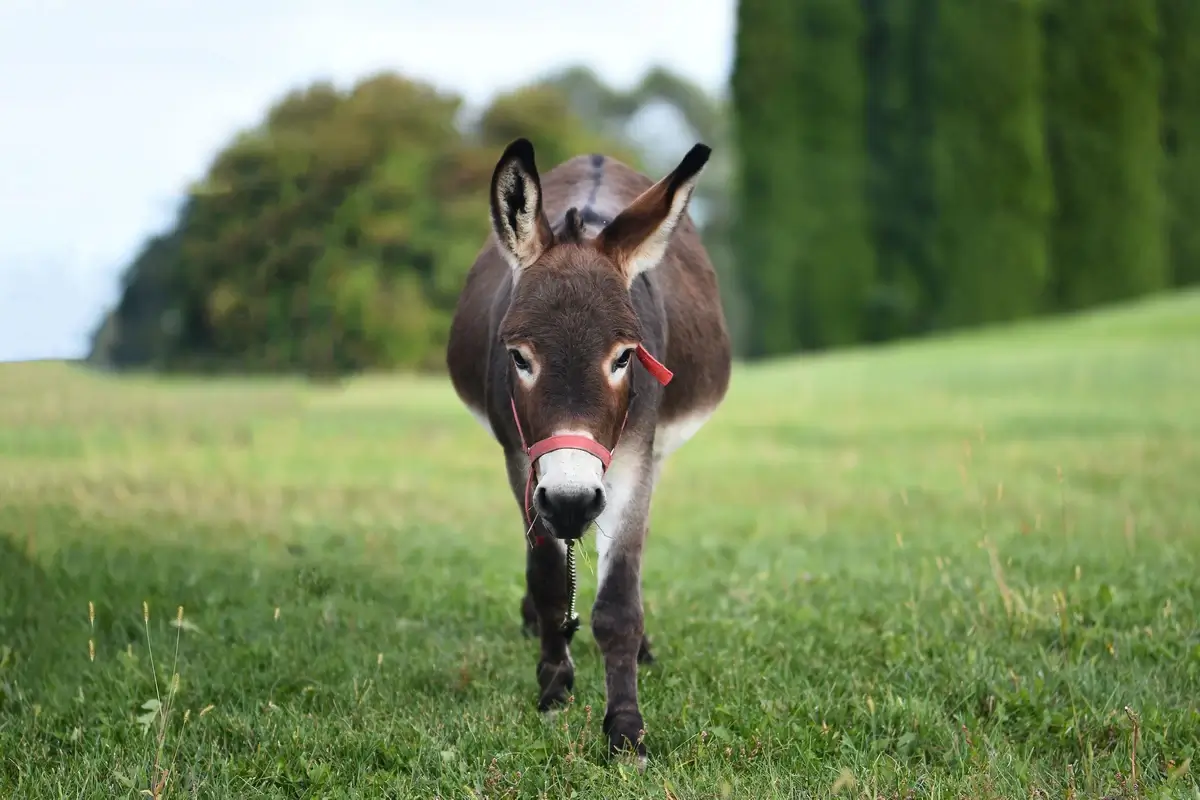
Julissa Helmuth / Pexels
10. Llamas: The Farm Security Guards
Now let’s sidestep into the world of llamas, the underappreciated security systems of the farm world. Ever notice that some farms have a llama or two hanging around? That’s not just for their charismatic personalities or their Instagrammable faces. Llamas have a natural instinct to protect, and they’re often used as guards for other farm animals like sheep and goats.
With their keen eyesight and a strong sense of hearing, they’re excellent at spotting potential threats. When something fishy’s going on, they’re known to make a variety of vocalizations, alerting the other animals and even their human caretakers. Some llamas go as far as physically chasing off intruders. Forget about watchdogs, how about a watchllama?
11. Alpacas Spit When Upset
Diving further into our collection of farm animal fun facts, let’s talk about the sassy alpacas. Cute? Absolutely. Cuddly? For sure. But hold your horses—these creatures have a spitty side. Alpacas will unleash a glob of spit when they’re feeling threatened or just downright irritated. It’s like their unique way of saying, “Hey, I need my space!”
The spit isn’t just saliva; it often includes the contents of their stomachs. Trust me, it’s as gross as it sounds. This behavior is usually a last-resort communication tool, used to establish social hierarchy or express discontent. So if you’re planning to get close to an alpaca, you might want to assess its mood first, unless you’re in the market for a spit shower.
12. Bee Communication: The Waggle Dance
Ever heard of a dancing bee? Well, bees are actually the jitterbugs of the insect world! This next fun fact is so buzzing awesome that you’ll want to waggle about it. Honeybees use a dance, known as the “waggle dance,” to communicate the location of food sources to their hive-mates. A bee will shake its booty in a figure-eight pattern to indicate the direction and distance of a flower patch. The angle and length of the dance are all vital pieces of info for the other bees.
It’s a complex language for such tiny creatures, proving once again that size doesn’t measure intelligence—or dancing skills. So, while you may consider them a small part of farm life, they have a big role in pollination and communication.
13. Geese Have Tooth-Like Structures
Say “Ah!” and let’s peek inside the mouth of our feathery friend, the goose. No, they don’t have teeth like mammals, but they do have tooth-like structures on their beaks and tongues. These spiky formations help them grip and tear their food, making mealtime a cinch. These aren’t bones; they’re made of keratin—the same stuff your nails are made of!
It’s a perfect example of evolution doing its thing, providing geese with the tools they need to live their best goosey lives. The next time you see a goose nibbling away, you’ll know it’s not just pecking—it’s tearing and enjoying every bite, thanks to Mother Nature’s clever design.
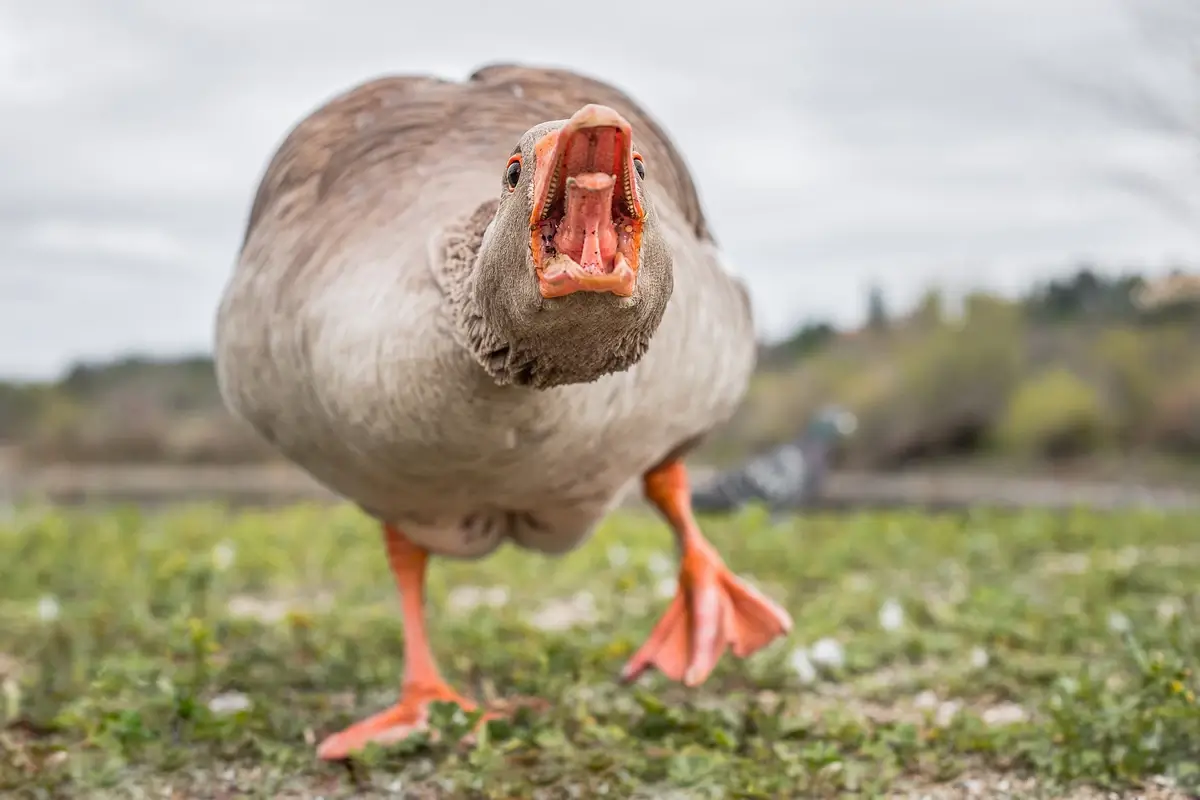
Image source: jooinn.com
14. Rabbits Eat Their Poop—For Good Reason!
Okay, brace yourselves for this next farm animal fun fact. Rabbits eat their own poop, but don’t scrunch your nose just yet; there’s a good reason for it! The feces they consume are called cecotropes, a special kind of dropping rich in nutrients. By eating them, rabbits get another shot at absorbing those nutrients, ensuring they get the most out of their diet.
I know, it sounds a bit like a gross life hack, but it’s essential for the rabbit’s health. So the next time you see a bunny nibbling on what seems like a questionable snack, don’t judge. It’s just doing its best to stay nutrient-rich and fabulous!
15. Ostriches Can Sprint Faster Than Horses
Hold onto your hats, because this next fun fact is about to zoom by! You may think horses hold the speed crown in the barnyard, but guess what? Ostriches can give them a run for their money—literally. These big birds can sprint up to speeds of 45 miles per hour, outpacing even the fastest racehorse.
They may not be able to fly, but who needs wings when you’ve got legs like that? Their strong, muscular legs not only make them speedy but also turn them into powerful kickers when threatened. Move over, Secretariat; there’s a new speedster in the farmyard, and it’s got feathers!
16. Ferrets Make Great Hunters and Farm Helpers
Oh, the ferret. Small but mighty, this little carnivore is not just a popular pet; it’s also a secret weapon in the farmer’s arsenal. For centuries, ferrets have been employed in farms for their unmatched skills in hunting and pest control. Don’t let their playful demeanor and adorable face fool you; these guys are skilled predators, particularly adept at crawling into tight nooks and crannies to root out vermin.
Farmers primarily use ferrets to control populations of rabbits, rats, and other pests that can damage crops and structures. They’ll even venture into burrows, using their keen sense of smell and agility to flush out the little intruders. This is especially beneficial in organic farms, where chemical pest control isn’t an option.
The role of ferrets in farms is such that they can be considered a natural, furry alternative to pesticides. So, while they might look like they belong in a child’s cuddly toy collection, in reality, they’re hardworking farmhands in fur coats. Consider them the unsung heroes of the agricultural world.
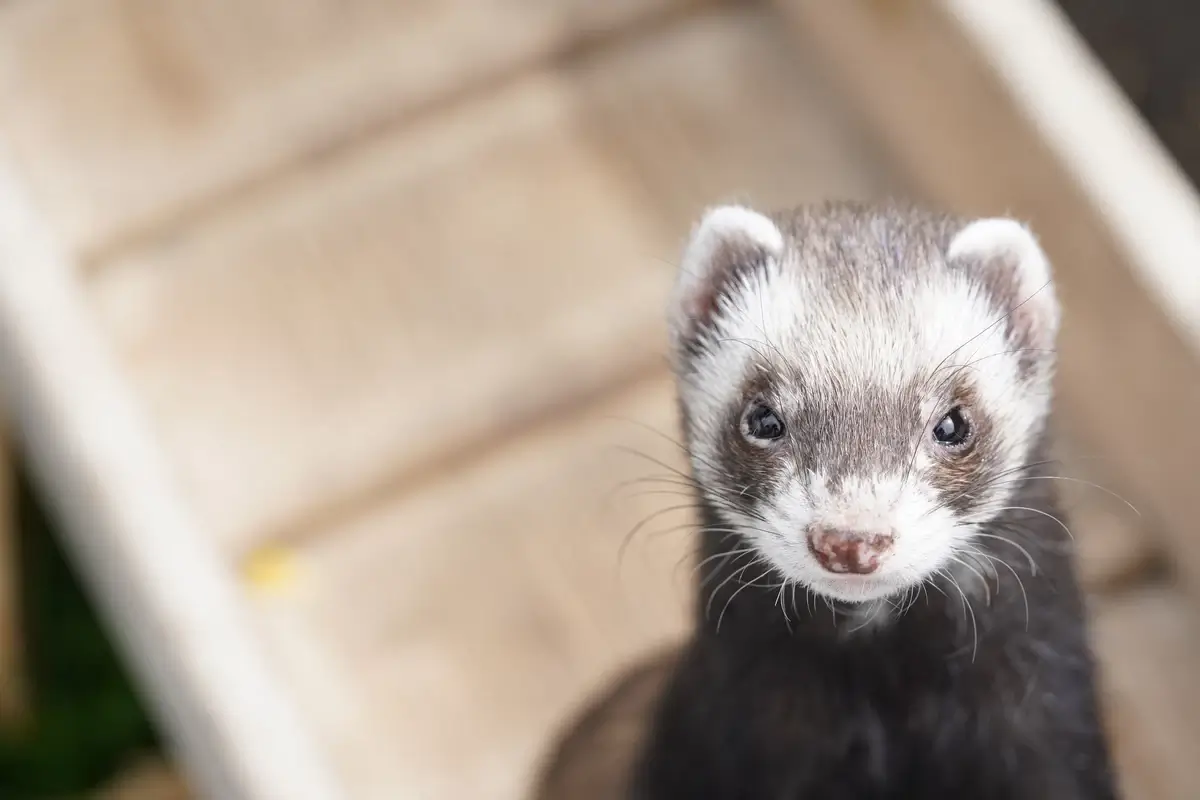
Verina / Pexels
17. Goosebumps from Chickens?
We all get goosebumps, right? But did you know that this term actually comes from the look of a plucked chicken’s skin? Yep, when you pull out all the feathers from a chicken, the follicles left behind create bumps, and that’s what human “goosebumps” resemble.
It’s another fun linguistic barnyard memento we owe to our farm animal friends. The next time you get chills, remember: you’re wearing your inner chicken on your sleeve—or, you know, your arm.
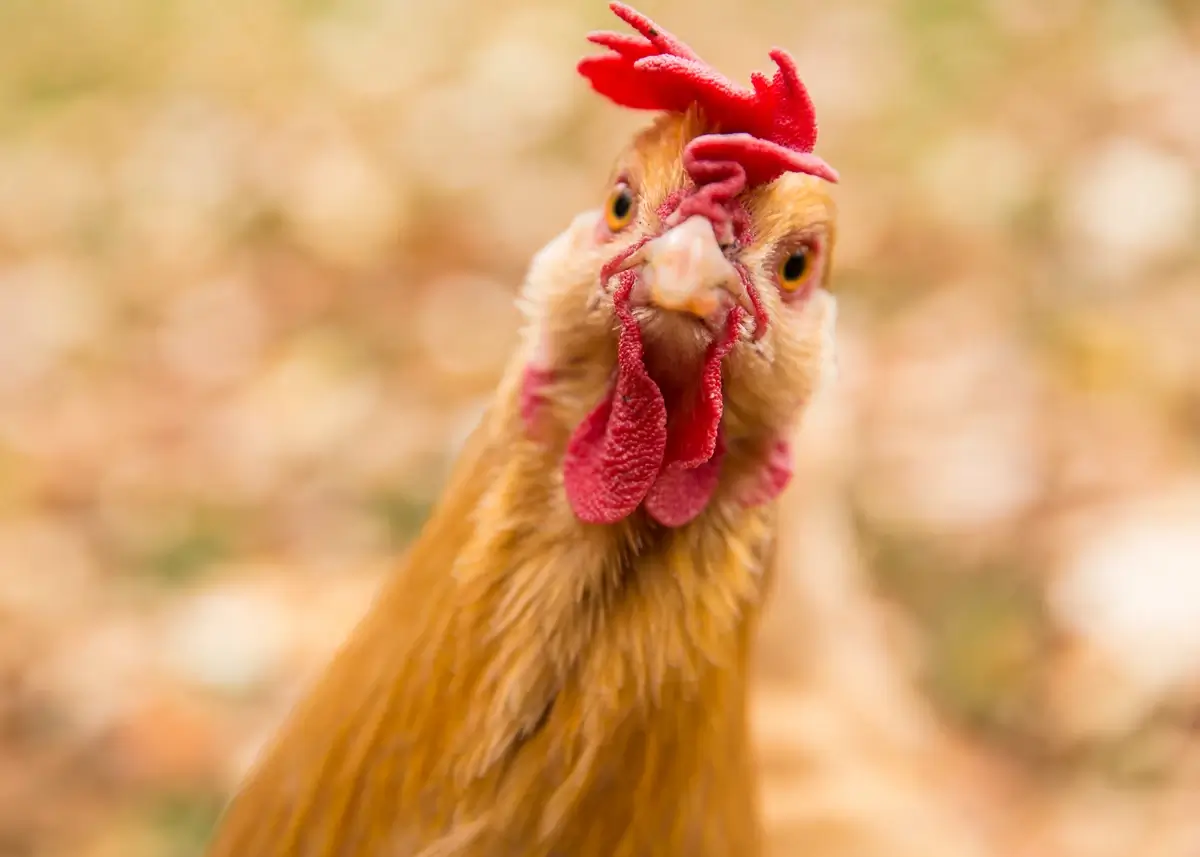
Image source: lettergirldotblog.files.wordpress.com
18. Buffaloes Aren’t Actually Buffaloes
Time for a farm animal fun fact that might just challenge everything you thought you knew about farm critters. Those “buffaloes” you’ve heard so much about in American folklore? Well, surprise! They’re not buffaloes at all; they’re actually bison. True buffaloes are native to Africa and Asia and look quite different from their American counterparts.
But hey, “Home on the Range” wouldn’t sound as catchy with “where the deer and the bison play,” now would it? No matter what you call them, these majestic creatures are a symbol of the American West—even if their name is a bit of a misnomer.
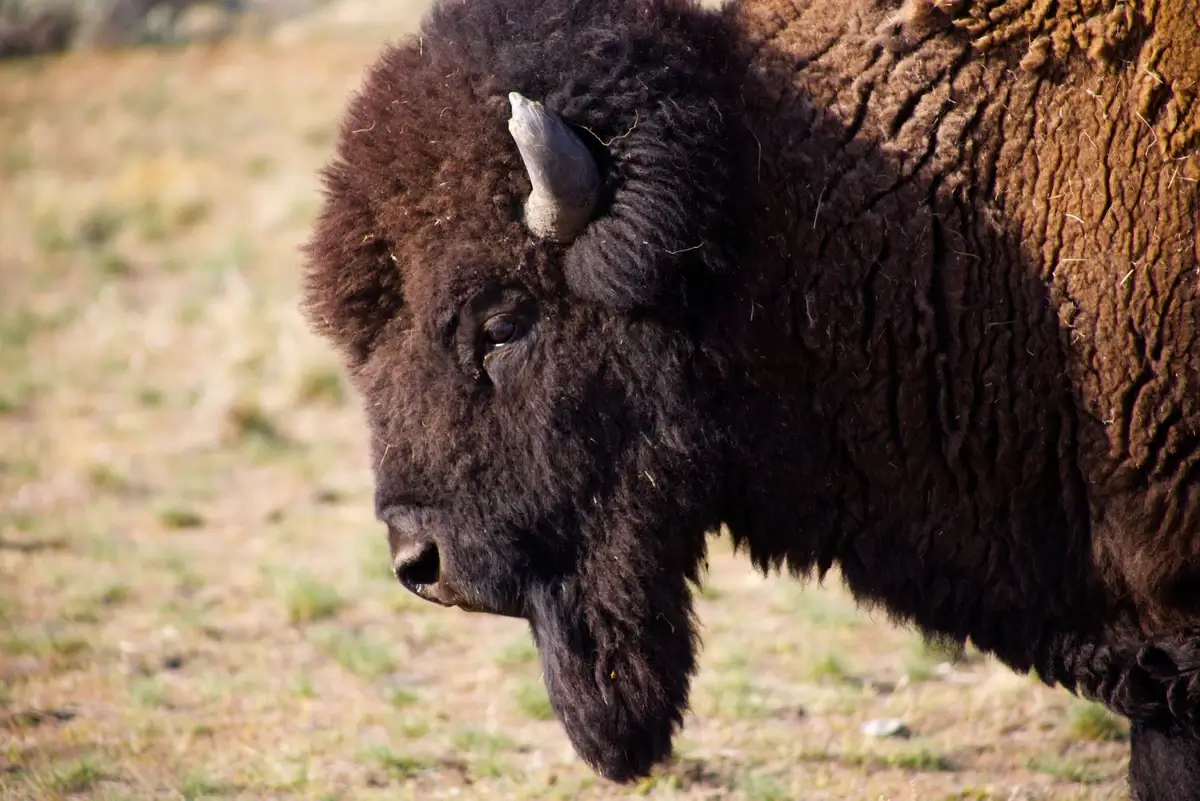
Get Lost Mike / Pexels
19. Cows Can’t Walk Downstairs
Now, we’ve all heard that cows can be led upstairs but not downstairs, but how much truth is there to that? A cow’s knee joints and hips don’t allow for the kind of movement needed to walk downstairs. Their weight distribution and center of gravity are also issues.
Let’s get into the “moo-tails”: cows have a different center of gravity compared to humans, and their inability to see stairs well complicates matters. So, it’s not just bovine stubbornness; it’s a matter of physiology. If cows were students, they’d definitely prefer elevators to stairwells.
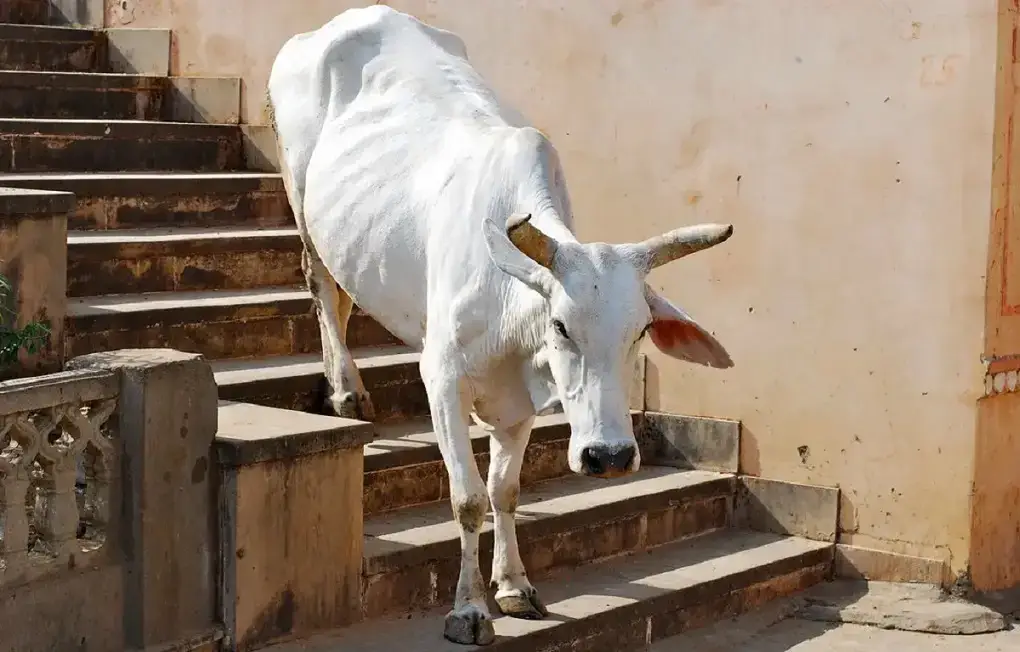
Image source: krishijagran.com
20. Ducks Have Specialized Feathers for Swimming
If Michael Phelps were a farm animal, he’d be a duck. These quacky characters are basically the Olympians of the pond, and it’s all thanks to their specialized feathers. Ducks have a set of feathers that are incredibly water-resistant, allowing them to float effortlessly. The secret? A special gland near the base of their tail, called the uropygial gland, secretes oil that they spread over their feathers to keep them waterproof.
Ever seen a duck preening itself? That’s not just duck vanity; it’s essential maintenance to keep their feathers in swimming shape. Just like you wouldn’t hit the pool without your swim cap and goggles, ducks need their feathers to be just so for their water escapades.
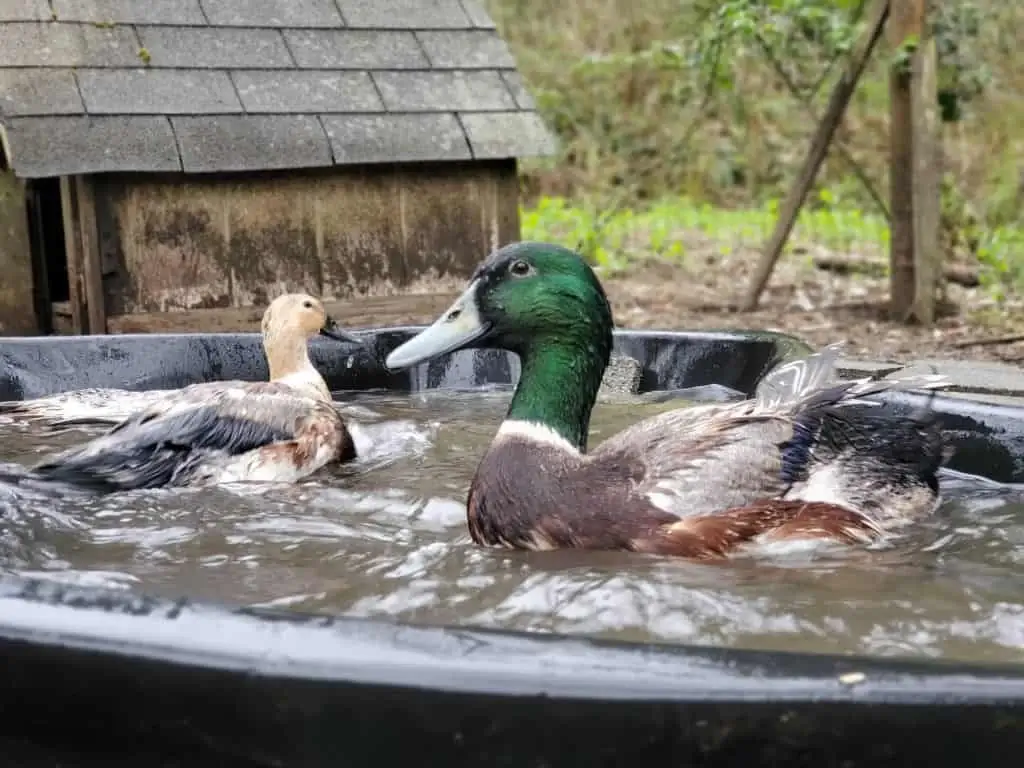
Image source: afarmgirlinthemaking.com
21. Horses Sleep Both Standing and Lying Down
Nope, it’s not laziness, it’s just multi-tasking! Horses have the incredible ability to catch some Z’s both standing up and lying down. When standing, a set of ligaments and a unique joint mechanism lock their legs in place, allowing them to rest without tumbling over. But REM (Rapid Eye Movement) sleep, where dreaming occurs, only happens when they’re lying down.
In the wild, this ability likely served as a survival mechanism, allowing horses to make quick getaways from predators even when dozing. In short, horses have turned sleep flexibility into an art form.
22. Rabbits are Not Rodents
Let’s talk about bunnies. You might think of them as cute, fluffy rodents, but hold your carrots—rabbits are not rodents! They belong to the order Lagomorpha, which is entirely separate from the Rodentia order. The main differences lie in their teeth and diet. Rabbits have two sets of upper incisors, while rodents only have one. Plus, rabbits are strict herbivores, while many rodents are omnivores.
So, don’t lump Thumper in with Mickey Mouse; they’re as different as apples and oranges—or carrots and cheese, in this case.

Francesco Ungaro / Pexels
23. Goats Have Rectangular Pupils
Ever stared into a goat’s eyes and felt a little unnerved? You’re not alone. Goats have rectangular pupils, which isn’t just an aesthetic choice to make them look more intriguing at parties. These unusual pupils actually give them a wider field of vision—about 320 to 340 degrees around them, compared to a measly 160 to 210 for humans.
The shape also allows for more light to enter their eyes, helping them see better in the dark. It’s a brilliant adaptation for avoiding predators, although it might make their poker face a bit unsettling.
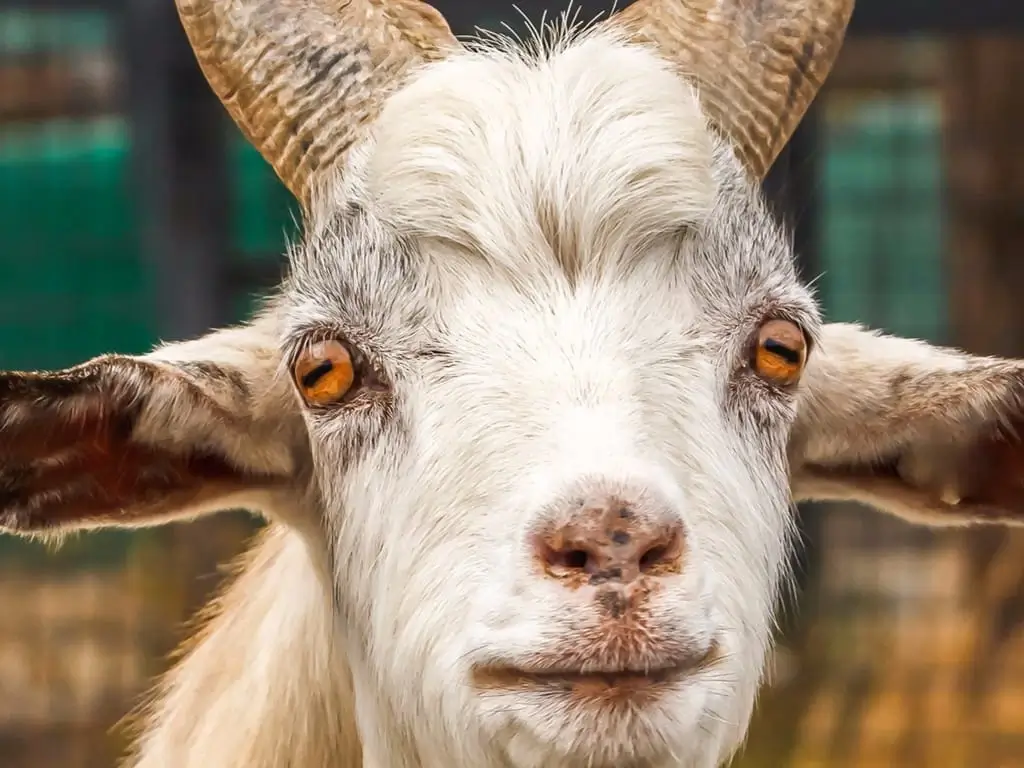
Image source: vocal.media
24. Quails Can Lay Golden Eggs (Well, Almost)
Here’s another intriguing tidbit for you. Quail eggs may not be made of gold, but they’re golden in terms of health benefits. These little eggs are packed with vitamins and nutrients, including Vitamin B12, selenium, and riboflavin. In fact, they have more fat and protein than chicken eggs, but in a mini, adorable package.
They’re also considered a delicacy in many cuisines around the world. So while they might not help you in a Jack-and-the-Beanstalk scenario, they’re pretty much culinary gold.
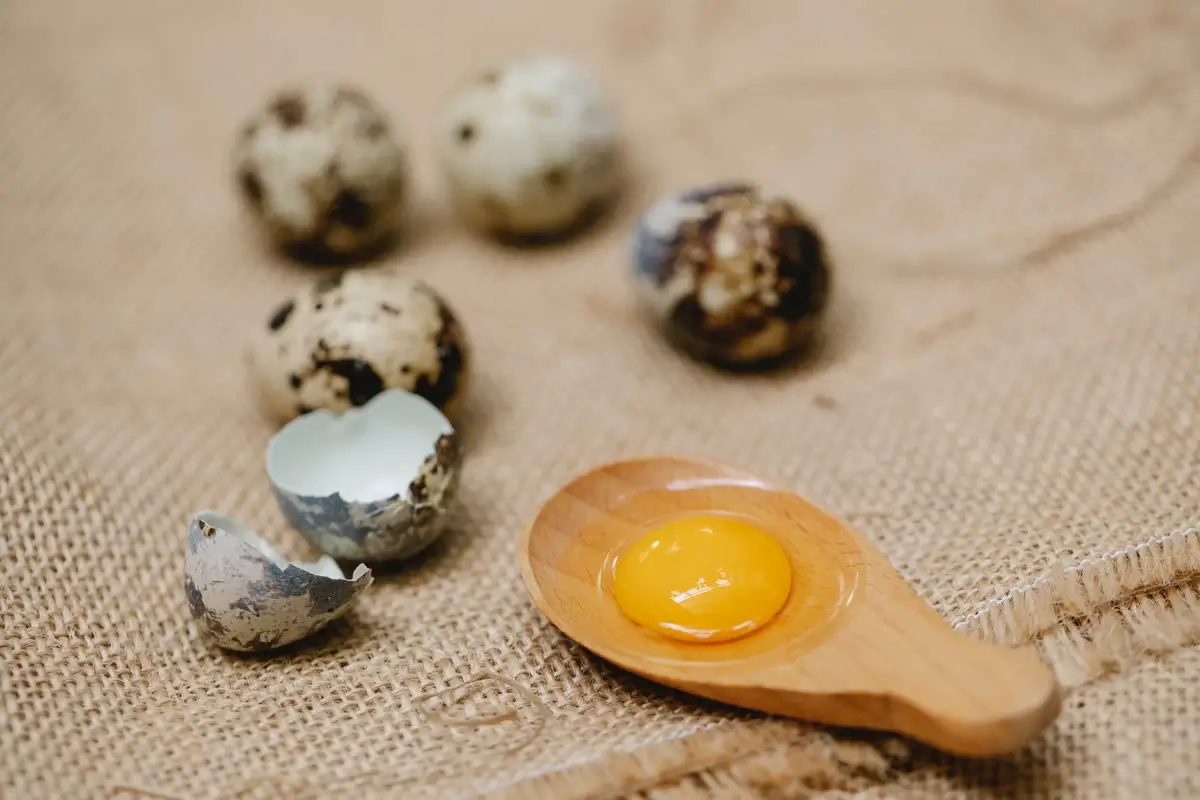
Klaus Nielsen / Pexels
25. Chickens Can Recognize Over 100 Faces
Think you’re good with faces? Chickens have you beat. Research has shown that these cluckers can recognize and remember over 100 different faces, both of other chickens and of humans. This incredible social intelligence helps them maintain a complex pecking order within their flock.
The next time you visit a farm, better be on your best behavior. Not only will the chickens remember you, they’ll probably gossip about you to their 100 closest friends!
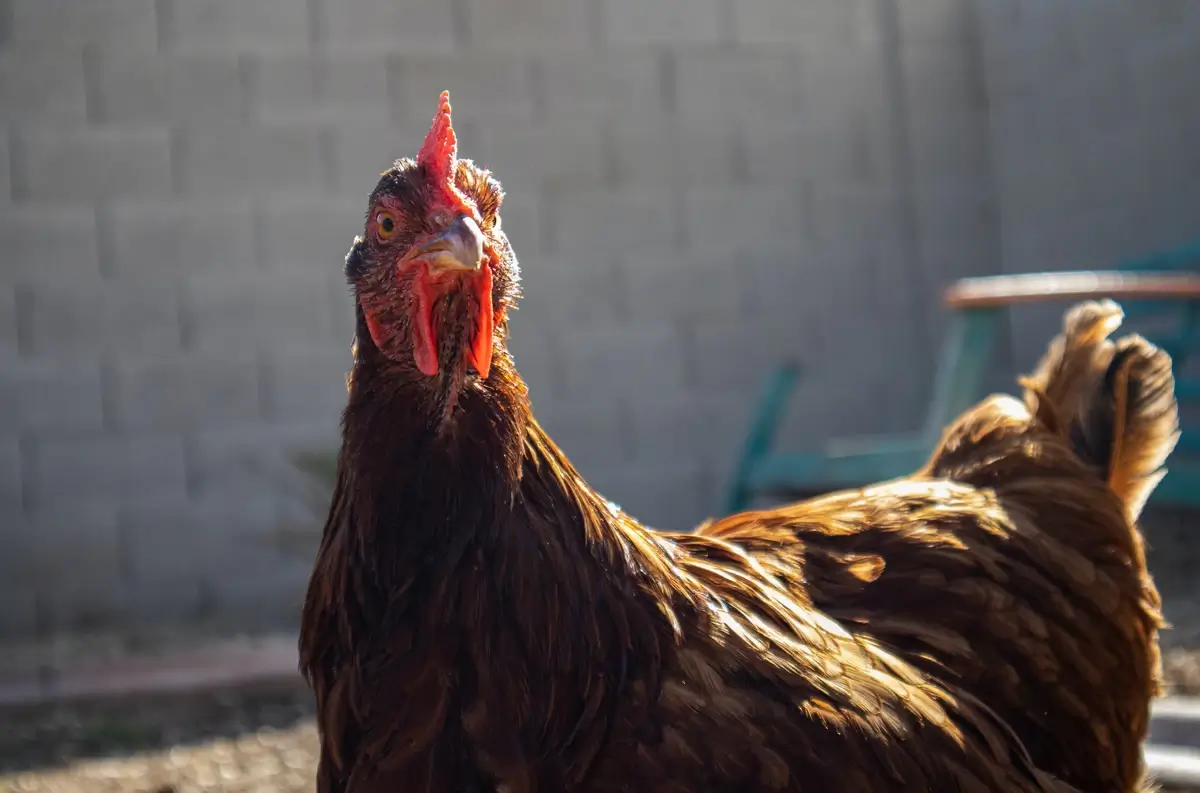
Moepoofles Moepoofles / Pexels
FAQ
What are 8 interesting facts about farm animals?
- Pig Sunscreen: Ever wonder how pigs deal with sunburn? They use mud as natural sunscreen! It’s not just for wallowing and cooling off—pigs are basically spa experts in disguise.
- Talking Turkey: Turkeys are more vocal than they get credit for. They can make over 20 different sounds. Imagine walking through my farm and hearing a turkey gossiping; it’s like the feathered version of high school.
- Duck Quack Echo: Contrary to the urban legend, a duck’s quack does echo. But thanks to the soft, rolling sound structure of the quack, it’s hard to distinguish the echo. It’s as if ducks have their very own sound engineer!
- Alpaca Dentistry: Alpacas only have teeth on the bottom and a hard gum on the top. Their dental game might not win any beauty contests, but it’s a fascinating evolutionary hack for grinding down tough plant material.
- Rabbit Acrobatics: Ever heard of a “binky”? No, it’s not a baby’s pacifier—it’s what rabbit enthusiasts call the joyous leaps and twists that bunnies do when they’re happy. Picture it: a bunny springing into the air and twisting its body and head in opposite directions. It’s like watching the gymnastics section of the Animal Olympics!
- Donkey Memory: A donkey’s memory is phenomenal, rivaling that of elephants. If a donkey had a bad experience with a person, it can remember that individual for up to 25 years. This makes donkeys the ultimate keepers of grudges—or maybe just really selective about their friends.
- Cat Whisker Navigation: While not typically thought of as traditional “farm animals,” barn cats are a common sight, keeping pesky rodents at bay. Did you know a cat’s whiskers are roughly as wide as its body? This helps them gauge whether or not they can fit through openings, a particularly useful feature for slinking around barns and tight spaces.
- Rooster Timekeepers: Contrary to popular belief, roosters don’t just crow at dawn; they can crow any time of the day or night. Some believe they have an internal clock that helps them anticipate sunrise—making them nature’s original alarm clocks (with no snooze button!).
What lives in farm animals?
This might sound like a science fiction plot, but there are entire ecosystems within farm animals! Beyond their obvious biological organs and systems, animals like cows, chickens, and sheep host a plethora of microorganisms in their guts, skin, and even respiratory systems. These include various bacteria, protozoa, and sometimes parasites that help (or sometimes hinder) digestion and nutrient absorption. Gut bacteria in ruminants like cows and sheep help break down tough plant materials, converting them into nutrients the animals can use. So yes, farm animals are like walking, mooing, and clucking microcosms of life!
What are all farm animals called?
Farm animals are often referred to as livestock when talking about them collectively. This category typically includes animals like cows, pigs, sheep, goats, chickens, and turkeys. However, depending on the farm, you might also see less common animals like alpacas, llamas, ducks, geese, and even rabbits and bees categorized as farm animals.
What do farm animals eat?
Farm animals are like the diners of the animal kingdom, each with their unique menu preferences:
- Cows: Primarily eat grass, hay, and silage, though they also get grain rations for extra nutrients.
- Pigs: Omnivores that eat a diet of grains, fruits, and vegetables, as well as protein sources like soybean meal.
- Chickens: Eat a mixture of grains, seeds, fruits, vegetables, and insects.
- Sheep and Goats: Enjoy grazing on grass, clover, and other pasture plants, as well as hay.
- Horses: Feed on grass, hay, and specialized grains.
What is the most useful farm animal?
Ah, the age-old debate! The utility of a farm animal often depends on what the farm needs:
- Cows: Excellent for both milk and meat, not to mention their leather.
- Chickens: Eggs, meat, and pest control all rolled into one feathery package.
- Pigs: Valuable for meat and their ability to turn kitchen scraps into protein.
- Sheep: Provide wool, milk, and meat.
- Goats: Offer milk, cheese, meat, and mowing services.
Personally, I’d say chickens might take the crown for most versatile, but don’t quote me on that in front of Bessie the cow; she’s a bit sensitive.
How many farm animals are there?
This is a tough one! The number of farm animals globally is staggering and continuously changing. According to FAO (Food and Agriculture Organization of the United Nations) estimates, there were over a billion pigs, cows, and sheep each, and a whopping 25 billion chickens worldwide. And that’s just scratching the surface.
What are the cleanest farm animals?
You might be surprised to hear this, but pigs are often considered the cleanest farm animals. Despite their reputation for wallowing in mud (which is actually their form of sunscreen and cooling off), pigs prefer to keep their living quarters neat and tidy.
What is the smartest animal on a farm?
Pigs are often considered the brainiacs of the barnyard. They have excellent problem-solving skills, can learn tricks, and even play video games designed for pigs. Yes, you read that right—video games for pigs!
Do farm animals have personalities?
Oh, absolutely! Spend enough time around farm animals, and you’ll see that each one has its own quirks, likes, and dislikes. Chickens have their pecking order, cows have their BFFs, and don’t even get me started on the drama that unfolds in the goat pen.
How are animals kept in farms?
The conditions can vary widely, from traditional family farms to industrial agriculture operations:
- Free-Range or Pasture-Raised: Animals are given ample outdoor space.
- Confinement Systems: Animals are kept in more restricted environments, like pens or cages.
- Barns/Stables: Often used for horses, cows, and other larger animals.
- Chicken Coops: Designed to house chickens, sometimes with access to outdoor runs.
The trend is increasingly moving towards more humane and sustainable farming practices, which not only benefits the animals but often results in healthier and tastier products.


